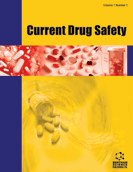Abstract
Regulation of erythropoiesis and the maintenance of erythroid homeostasis rely on modulation of erythropoietin (EPO) gene expression in response to tissue oxygen tension. EPO expression is tightly regulated in a tissue-specific manner and by development stage. However, is the hypoxic stimulation that primarily determines the EPO transcription. A 50 bp hypoxia-inducible enhancer, located 120 bp 3′ to the polyadenylation site, mediates the transcriptional response to hypoxia by binding several stimulatory transcription factors, such as hypoxia-inducible transcription factors (HIF-1α and HIF-2α) and hepatocyte nuclear factor-4α (HNF-4 α). Pro-inflammatory cytokines, as interleukin (IL)-1β and tumour necrosis factor (TNF)-α, inhibit EPO expression, apparently by increasing the binding of GATA factors to the EPO promoter and by down-regulation of HNF-4α. Understanding oxygen and tissue-specific regulation of EPO production is of high physiologic relevance. Moreover, this knowledge might be useful for new therapies to treat clinical states associated with aberrant EPO gene expression.
Keywords: Erythropoietin, hypoxia, gene regulation, hypoxia-inducible factor, EPO enhancer.





















